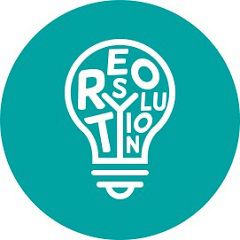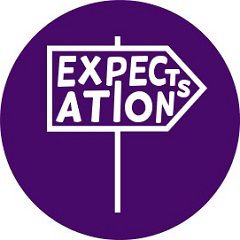The Six Pillars of Experience have been consistently shown to be the essential characteristics of world class experiences. The presence of these six factors is essential if commercially beneficial behaviors are to ensue because of customer experience.
Whether that is increased share of wallet, loyalty, or advocacy, these six factors are the prerequisites for commercial success. However, as they are all interconnected it is essential to be good at all six.
Interestingly over the past 12 months there has seen a rapid rise in holistic thinking, the realization that a competitively superior experience is multi-dimensional and often multi-sensorial. Our leading organizations are masters at managing the Six Pillars as a set.

1. Integrity
Corporate integrity and its outcome trust continue to be a focus for the leading companies. Reengaging with purpose, validation of values and moving CSR to the forefront of the brand have been key areas for organizations. Corporate behavior has never been under such scrutiny.
The rapid uptake in ecommerce across all age groups has also brought data security, privacy, and cybercrime front of mind for both organizations and their customers. Firms are having to take a forensic view as to how they capture, manage, protect, and update the data that is increasingly used to fuel customer engagement programs.
ESG has become a preoccupation as firms seek to address the rapidly growing desire amongst consumers to know the provenance of what they buy, the way in which the supply chain is managed for sustainability and how employees are treated, when making purchasing decisions.
The brand is now firmly based on corporate behavior, it is what customers say it is – not what marketing teams seek to communicate.
2. Resolution
Customer problem solving has moved beyond just fixing problems that a firm may cause for its customers into a focus on customer lifetime problems, both as a source of innovation, but also a mechanism for extending a trusted relationship.
Companies are looking at pain points in life as well as pain points in their processes and how both impact the resulting customer journeys. Apps and digital solutions are rapidly being rolled out that address the totality of customer problem solving needs. For example, for Mecca in Australia it is not just about sales of makeup, but how to apply it: education, support and real-time interactions held virtually with consultants are now a way of life for them.
In a world of social media and review driven purchases “heroic” customer recovery is no longer a nice to have, reputationally it is essential.


3. Expectations
We have historically observed a trend of expectations transfer as customers expect their best experience with a company to be replicated elsewhere, this is become even more evident this past year, as customers embrace a raft of new technologies. Firms are having to rapidly increase the pace of innovation and development to keep up and this is driving an improvement across all aspects of business. New technologies such as AI and machine learning are pushing the boundaries of what is possible every day which in turn is leading to an escalation in customer expectations.
The first stage in meeting or exceeding customer expectation is to know what they are and monitor how they are changing over time. Customer feedback has become an essential barometer both of customer perceptions of how experiences are meeting their expectations but also how those expectations are changing based on experiences with competitors.
More than ever consumers now expect connected journeys, seamless transitions across channels, and end to end experiences that are tailored to their circumstances.
4. Time and Effort
Effort and loyalty are inextricable connected, the easier an experience is, the less physical, emotional, and cognitive effort it takes, the more likely a customer is to continue purchasing. This year we have seen a significant rise in the usage and popularity of delivery services. Ecommerce has become a way of life and next day or even same day delivery a fact of life.
However, fastest isn’t always best, it is how time and effort are expended that is important. The increasing fusion of online and offline experiences are taking account of the fact that sometimes consumers what to browse, to evaluate and to be inspired and stimulated.
Several leading companies have found ways of making this happen. Reconceiving the nature of physical spaces to become places of education, showrooms, or centers of excellence in utilizing a particular product, coupled with exciting digital experiences that promise rapid delivery in a “have it now” world.


5. Personalization
Advances in technology, data, and analytics are enabling companies to create much more personal and “human” experiences across moments, channels, and buying stages. However personalization is so much more than just technology, whilst tech is undoubtedly an enabler, true personalization is how the customer is left feeling about themselves after an interaction, do they feel better equipped to tackle whatever comes next, more in control, more able to be successful.
Many of our leaders define their business in contributing to the success of their customers, not just selling products or even solutions, but improving the quality of their customers lives.
This requires a deep and profound understanding of the customer, being able to track patterns and be able to infer when an intervention will make the most positive difference.
The role of technology increasingly is helping to equip customers to be better versions of themselves.
6. Empathy
Organizations are beginning to “weaponize” empathy, it is becoming a core competence when it comes to user experience design and improvement. More widely anthropology and ethnography techniques are informing experience designers. Only by really standing in your customers shoes experiencing their lives as they experience it can organizations really hope to engage successfully with the rapidly changing consumer.
Customers want to deal with companies that show they care, that tangibly demonstrate that their customers are important to them, that they understand their lives and challenges, and have sensitive solutions to their problems.
Customers seek not just simplicity of transactions, physical ease, but also the psychological satisfaction of a human connection. Knowing when a customer needs human to human interaction and making it immediately available is the difference between an anodyne (but potentially effective) experience and one that connects emotionally and drives future behavior.

Contact our specialists for more information
Edgar Molenaars
Partner
Customer & Brand Strategy
KPMG in the Netherlands
Molenaars.Edgar@kpmg.nl
Kay van der Vleuten
Senior Consultant
Customer & Brand Strategy
KPMG in the Netherlands
vanderVleuten.Kay@kpmg.nl

